(The Republic of) GUINEA
When we were renovating Ivy for this trip, we invested a lot into being self-sufficient with solar electricity. But we hadn’t fully considered that facilities like this would sometimes make our relatively rustic truck the most luxurious home in town.
During the four days we camped in a village in Guinea’s Fouta Djallon highlands, we were the only ones with power for miles around. After sunset, Ivy beamed like a beacon in the blackness. Our guide, Bassir, told us they have to pay 2,000 francs (€0.21) to charge their phones at a communal point. I casually mentioned that he was welcome to charge his in our truck. Of course, that news spread like wildfire. Before long we had a steady procession of gentle knocks at the door, hands reaching up and phones held aloft –‘s’il vous plaît?’
How exasperating that the potential for hydro and solar power is massive here, but remains unfulfilled. Less than half the population has access to electricity.
It’s not just that. Our filtered tap water, gas cooker (the majority of people still burn wood and charcoal for cooking in Guinea) and even the comfy sofa/bed seem almost embarrassingly fancy in certain contexts. Our location in the village meant that plenty of people had the chance to pass by and take a look at our home. People often go slack-jawed when we explain that we live here.
After our first night there, Bassir suggested we start with an afternoon walk around the other villages in their sprawling district. We set off down the hill and soon coincided with what looked like preparations for a party. Bassir was just explaining that a wedding was afoot, when the roar of motorbikes filled the air and a group of young men appeared from around the corner, revving like crazy, the bride clinging to the back of one of the bucking bikes.
It was the equivalent of the hen night – a pre-wedding party before the bride would travel to the capital, Conakry, to be married. We couldn’t believe our luck.

Vroom, vroom….


We walked on, over the hill, across the river, right through several village compounds. Bassir was chatting to everyone. We weren’t even doing most of the talking but we were hoarse by the end of the walk from greeting dozens and dozens of people.
Again, it was fun to be able to take people photos while a local was with us to ensure it was okay. The kids were delighted to pose and see their photos on the camera. I’m not sure this is a generalisation I can really back up, but I’ll say it was noticeable throughout our time here that Guinea seems to have a lot of unbelievably photogenic people.



As we circled back, the hen party was in full swing – it was an absolute kaleidoscope of colours. What a sight in an incredible setting. We lurked on the edge, with the men, while the women danced and sang. In Scotland, we’d say they were ‘giein’ it laldy’ and I honestly can’t think of a better phrase to describe the scene.
[Gie it laldy: to do something vigorously, with gusto, to give it your all]
We wandered back home, passing groups of women as they poured down the hill to the party.
The next day we waited for another traveller to arrive, who had also contacted Bassir about some hiking. Rihab, a solo backpacker from Tunisia, showed up on a moto-taxi and we all set off for Kambadaga falls, one of the jewels of the Fouta.
It was a tough scramble down to the falls, but I think we can all agree it was worth the trouble. We swam below the upper falls as Rihab filmed videos for her social media channels. It’s highly unusual for us to meet an African woman traveller. Her sparky presence livened up the dynamic and helped our communication with Bassir.
On the hike back we passed by the top of the falls. Jeremy kept his vertigo well back as the three of us went close to the edge, and Rihab flew her drone to get some footage.

We returned home and shared another meal at Bassir’s – rice with a delicious potato leaf sauce, a dish that’s very common and popular in this part of West Africa.

The following day was our most challenging hike. As we were setting off early, Bassir asked if we wanted them to kill a chicken for dinner. We said yes (sorry veggies) and his wife Asnatu showed us the rooster in question – which made us feel bad, but not bad enough…
The hike almost stopped as soon as it started, when we encountered this very rickety, swingy rope bridge over the river. Not ideal for a vertigo sufferer, and Rihab wasn’t too keen either. We convinced Bassir to take another route and get our feet wet instead.


We walked through lots of villages, encountering dozens more people as we went. Bassir taught us some basic greetings in Pular (a Fula language). People seemed quite tickled when we called out ‘jaraama’ (I greet you) or ‘jam tun’ (which seems to mean loads of things) in response to their greetings.
We were heading for this cliff in the distance. It was searingly hot. We were all ready for a lunch stop but Bassir was fixated on the fact that he’d forgotten mayonnaise to add to our potato, egg and sardines lunch. Until we came to West Africa we had no idea how much of an obsession there is with mayonnaise here - there are vats of it at all the street stalls selling eggs, bread and fillings. Bassir was determined to reach the next village to try to find some. We were just about collapsing with the heat and fatigue. His dedication to mayo was commendable, and almost enough to award him Belgian citizenship on the spot, but we persuaded him it just wasn’t worth dying for.
We stopped shortly afterwards for a rest and cool down at the river – and the lunch was lovely...
Bassir had said the hike would be around 16km. I’m not sure how he’s measuring that. It was sunset by the time we were approaching our village again. Our phone apps said we’d walked around 22km. It was one of the hardest treks we’ve done in a while, but glorious.
We were all a bit hobbly the next day. As we were leaving, the former village president (in the red tracksuit) came to check up on a project he’d started, and was very excited to see our truck. People do visit the waterfalls – and we know others have slept there – but he said he’d never seen a tourist staying overnight in the village. A photo opp was called for.
We set off back down the terrible road, this time with Rihab in the back. You can see the angle we were at as we bumped over the rocks.
—
Have you noticed I’m determined to give you RSI with the amount of photo-scrolling needed to read this post? A few things have delayed its publication so it’s the mother of all catch-ups…
We drove on to Dalaba, and camped in the car park of a fascinating little historical site, the Case à Palabres museum – a roundhouse built in 1936 to a traditional Fulani design, which is the best example of it left in Guinea. Other than serving as a meeting house for local leaders and imams, and even West African heads of state, it was used for key gatherings of the independence movement.

We used our car park campspot as a base to walk to the Pont de Dieu, a natural rock bridge in a beautiful area near Dalaba.
As we left Dalaba we had – as we usually do – a list of essential chores. On the way out of town we stopped at one of the public water tanks to fill our jerry can. Here’s Jeremy waiting for his turn and looking delighted about it. We were having to top up in smaller quantities than usual. The day before this we’d asked for 20 litres from a local mosque.
It was yet another cruddy road to Mamou, which all travellers know is the point at which the roads become actual roads again. With unbroken tarmac and everything. The worst is over and you can, to an extent, relax about your vehicle breaking into pieces in the middle of nowhere. Around there we paid a visit to a gas plant to get our cooking bottle filled. We waited three hours for someone to come, then after the deed was done we decided just to spend the night there. We pulled up to a spot nearby, then the guys walked over and insisted we sleep right outside their walls where they could keep an eye on us.
It wasn’t an urban myth. After Mamou the roads really were gloriously smooth.


I couldn’t stop photographing these dangerously loaded vehicles. I mean, wtaf.




Our time in Guinea was almost over. Just one more annoying admin task to do. All visas – although already granted, paid for, and stamped on entry to the country – have to be ‘confirmed’ with a sticker at the airport near the capital Conakry, before you can leave. Don’t ask anyone to explain it because they can’t. We’d heard that Conakry really is an awful city, so we camped about 35km away and took a shared taxi to the airport, on the outskirts. We were so glad not to be driving – we both sat crushed together on the passenger seat as the hot, painfully slow journey took us along (and sometimes onto the ‘pavement’ of) the snarled up highway, past some of the worst slum markets we have seen. The air was dense with petrol fumes and smoke from smouldering rubbish and forest fires. To have even tried to take a photo would have been insulting. It really was a rancid hellscape.
With the magic sticker in our passports, we were free to leave. This final task did nothing to dent our experience of this country. Like a true journo, I’m going to steal something another traveller said about Guinea – when you leave it, you are at once relieved and filled with nostalgia. It’s at times a difficult, exhausting place, but with so much to love.

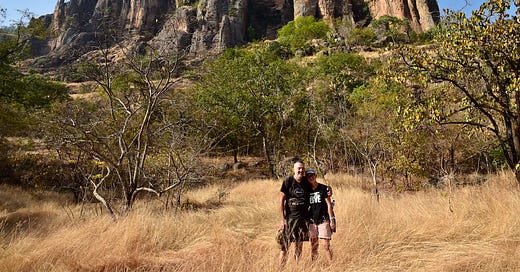

















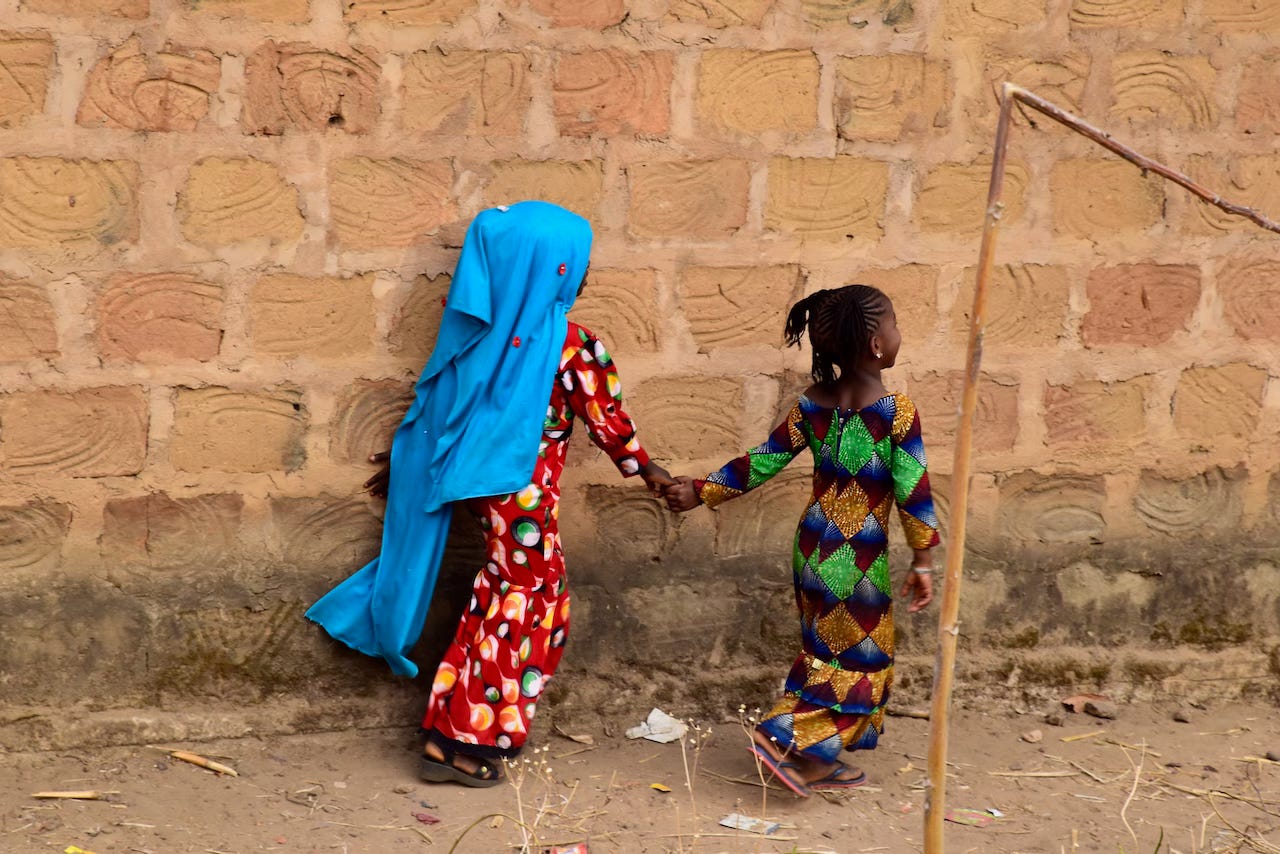











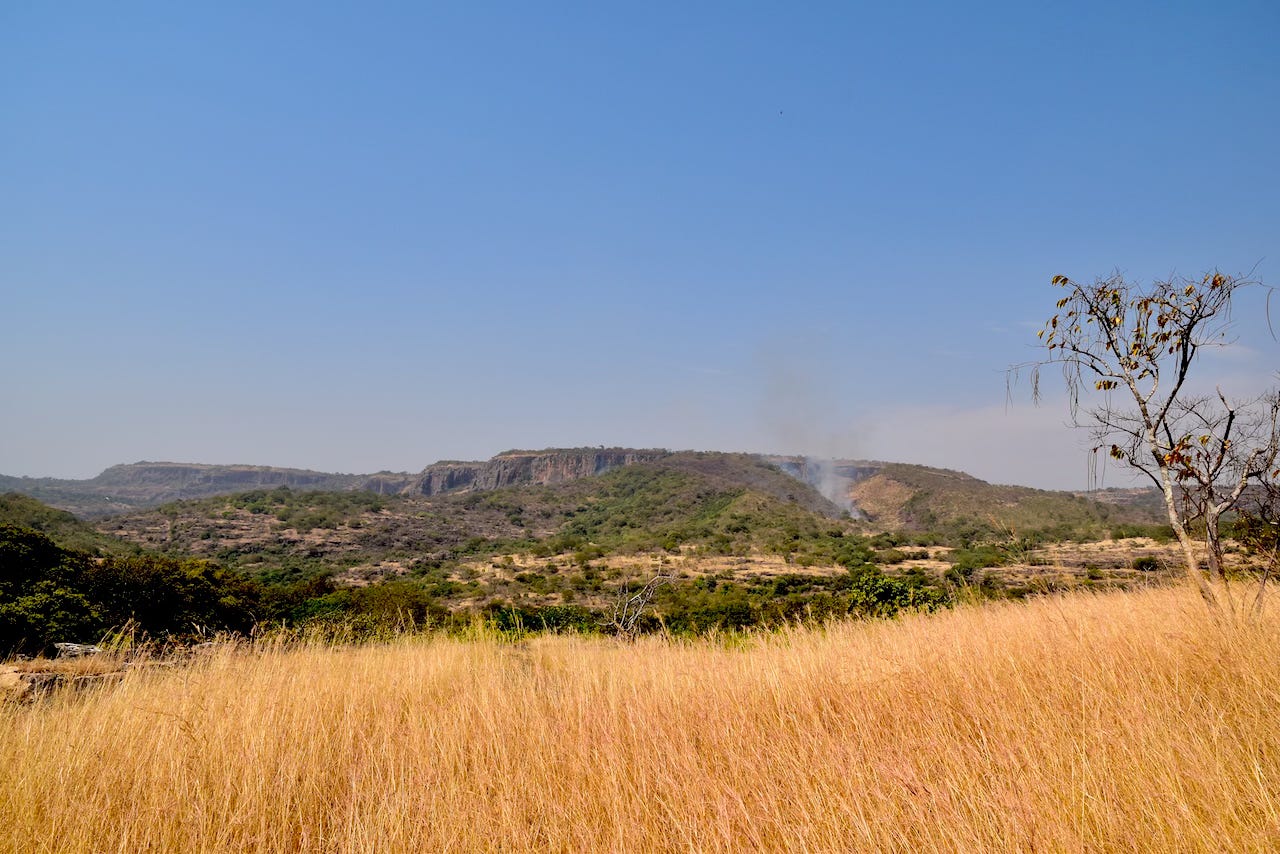


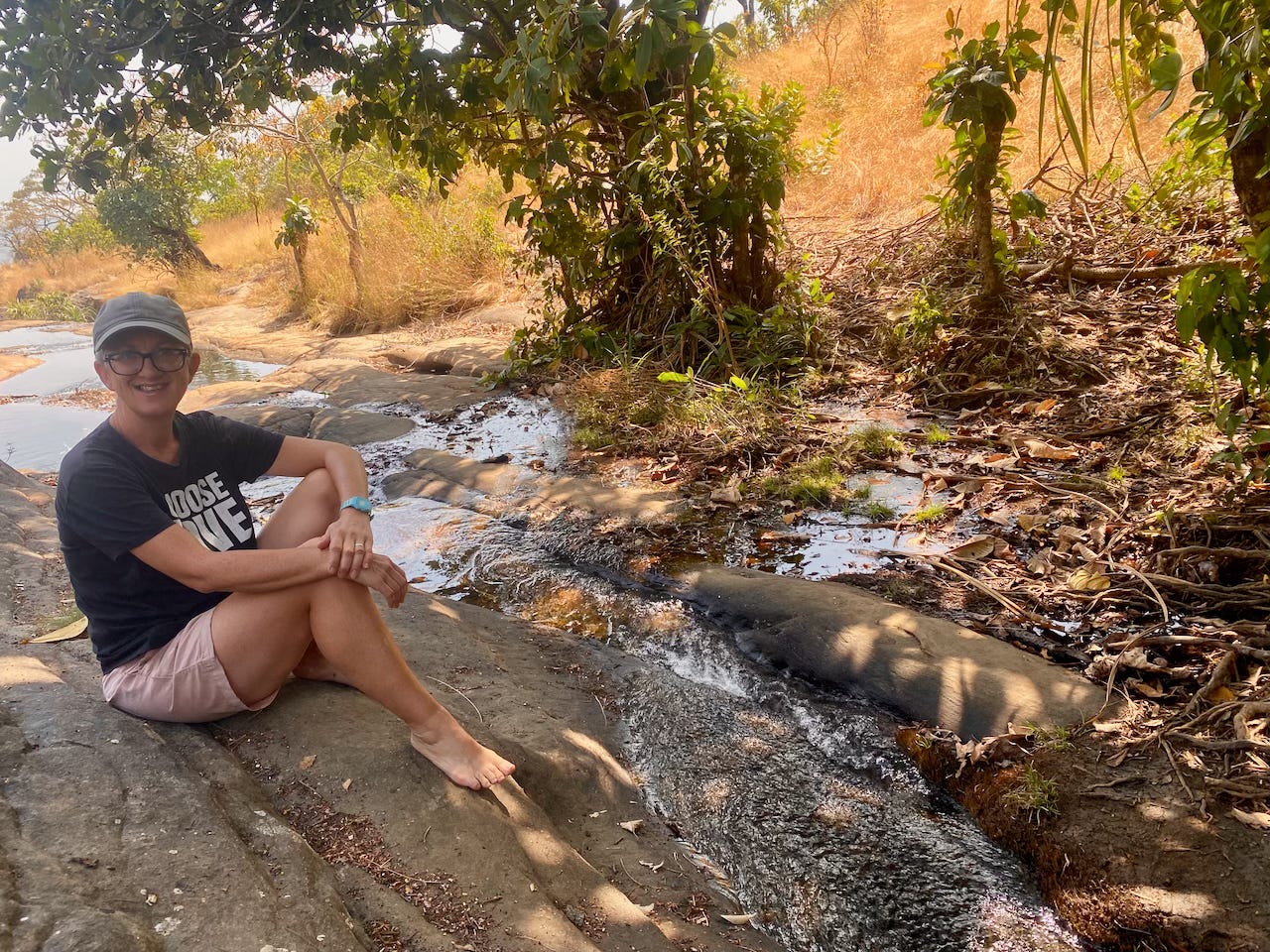






















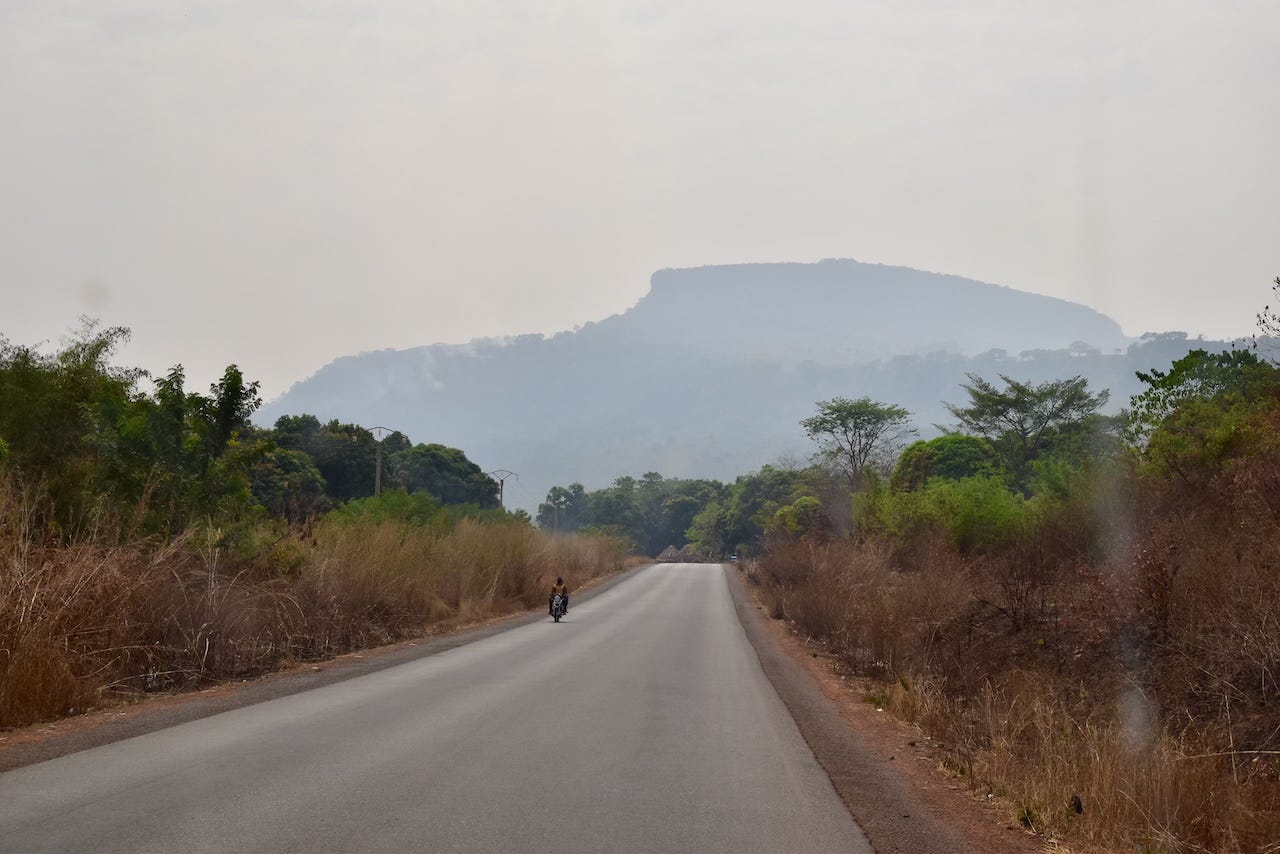

Brilliant
Worth the wait
Cracking photos, particularly like the cheeky black and white one
The drone footage is stunning
Hope you’re doing ok x
Thanks for sharing …. being a mayonese super fan myself (Nigel) I reckon I’d gorge myself silly .. Glad to have found your little corner of Substack …